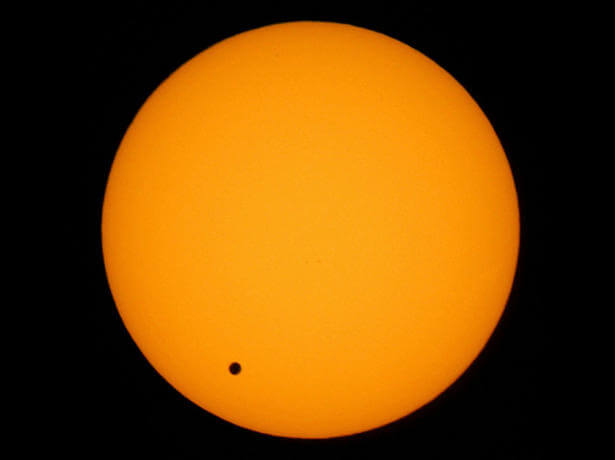
Sky-watchers are in for a real treat Tuesday night with one final Transit of Venus — for 105 years, at least.
The magnificent celestial display will be visible for Americans on, who will be able to view the rare event of Venus crossing paths with the Sun just before it sets.
Viewers can look up to the sky at around 5:54 p.m. EST to find Venus making its journey across the Sun. The Transit of Venus, which last took place in 2004, will be a once-in-a-lifetime event for those who missed it last time because as it won’t happen again until 2117.
The event, which many understand to be like that of a solar eclipse, won’t block much of the Sun’s light, but will appear as a small black dot moving across the large yellow disk.
A portion of the transit will become visible for around six hours in most of North America. Those in Hawaii and Alaska, as well as Japan and a few other regions, will see the entire transit during daylight.
Sky-watchers up for viewing the Transit of Venus are urged by officials to take precautions including wearing eclipse glasses. NASA.gov warns viewers, “No matter what recommended technique you use, do not stare continuously at the Sun. Take breaks and give your eyes a rest! Do not use sunglasses: they don’t offer your eyes sufficient protection.”
Not keen on standing outside staring up at the sky or perhaps you will still be at the office? Desk viewers can tune into a live webcast of the event. The primary Sun-Earth Day webcast is being hosted by NASA EDGE in Mauna Kea, Hawaii and will run through the entirety of the Transit of Venus.



































